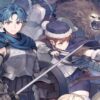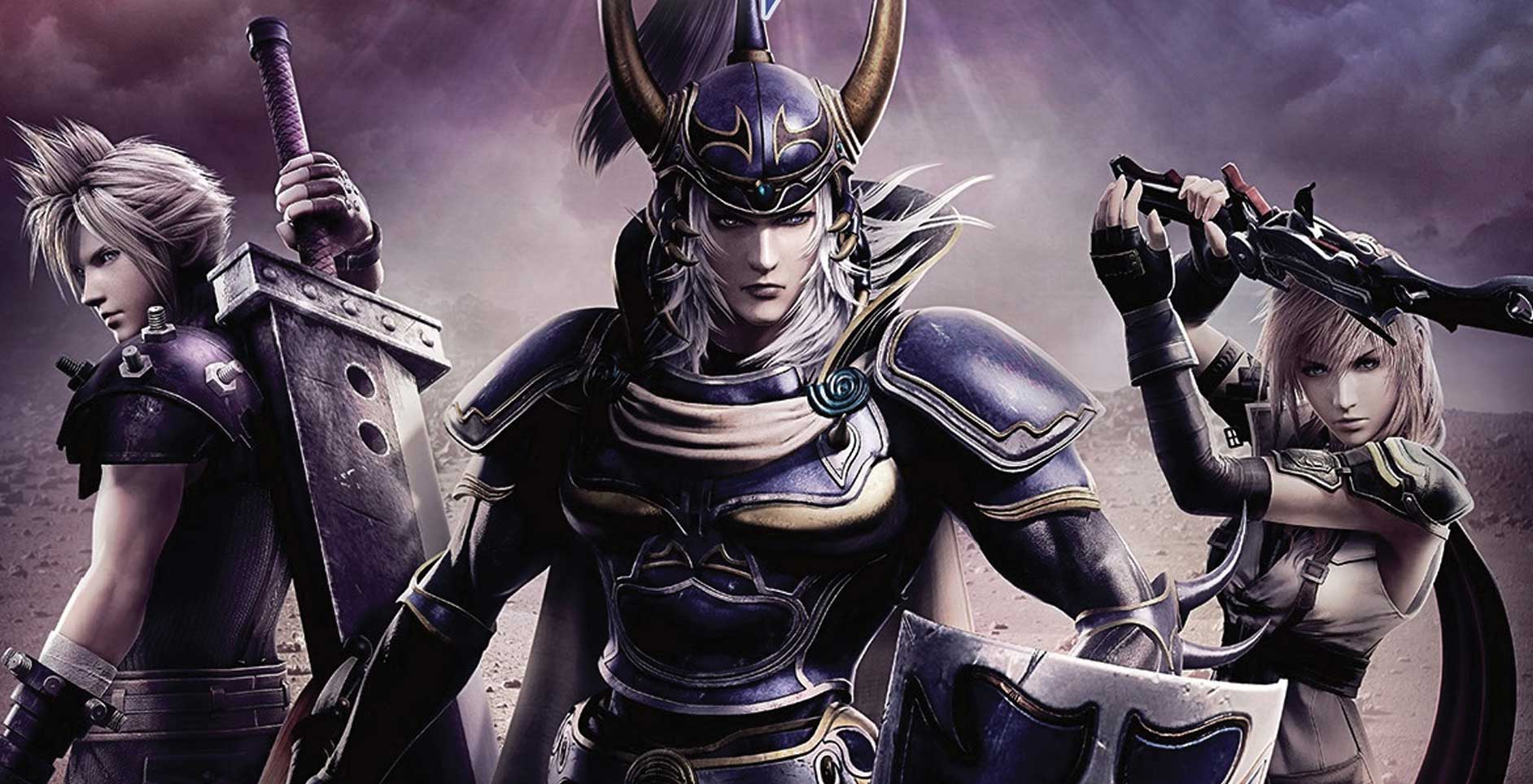I was surprised with just how much time I spent with the Dissidia games when they released on the PSP. While incredibly unorthodox in the way they treat combat, there was something about the simple pick up and play mechanics that just drew me in. Something about being able to play as my favourite characters from other Final Fantasy games and pit them against my most loathed ones from a storied history of over ten or so games. Dissidia Final Fantasy NT is the first game to jump from handheld to console, but it’s not the Dissidia you know and love.
There is a story behind Dissidia NT but it never really rises beyond self-indulgent nonsense. It’s admirable that the team have tried to bring these characters from different realms, worlds and time periods together AND try to play it straight, but ultimately it does come across as a corny and uninteresting. The Story Mode itself is questionable and a bit of a step down from what was offered in the original games. Rather than provide a story for each character, the game offers a single timeline that comprises of cutscenes, standard battles and bosses. On my count, there were about thirteen battles total in the Story Mode. Every cutscene and battle must be unlocked by spending “memoria” to unlock them. Memoria is doled out by completing other modes in the game, both online and off, and one unit is required to progress the story. I personally hated this and felt like it severely hindered the pacing of the story, but some might appreciate the idea of having to train and become more experienced to dig deeper into the timeline.
On my count, there were about thirteen battles total in the Story Mode. Every cutscene and battle must be unlocked by spending “memoria” to unlock them. Memoria is doled out by completing other modes in the game, both online and off, and one unit is required to progress the story. I personally hated this and felt like it severely hindered the pacing of the story, but some might appreciate the idea of having to train and become more experienced to dig deeper into the timeline.
Most won’t be playing for the story though, and it’s the battle system where Dissidia really excels.
Dissidia has always done its own thing with regards to battle. Every character has brave points and health points. Your health is self-explanatory, you lose it and you die. Brave points behave differently; the more your character has the more damage they can deal, and the less damage they can take. The objective of each battle is to deplete your opponent’s health bar, which is easier to do if you strip your enemy of their brave points first. If you only hit your enemy with brave attacks, they won’t die, so you’ve got to make sure you’re using your HP attacks as well. Every character comes equipped with moves that can deplete health points or brave points. The general flow of battle is to whittle down your opponent’s brave points, then attack them with a devastating health damaging attack. Each character has at least five to ten moves drawn from the games they appear in, and in a subtle nod to Smash Brothers, they’re activated by holding a direction while pressing a button – one for brave attacks, one for health attacks and another for EX abilities, which have a cooldown attached to them. It’s surprisingly simplistic in terms of actual inputs, and it’s why Dissidia NT is much more accessible than it appears when you get your hands on it.
Every character comes equipped with moves that can deplete health points or brave points. The general flow of battle is to whittle down your opponent’s brave points, then attack them with a devastating health damaging attack. Each character has at least five to ten moves drawn from the games they appear in, and in a subtle nod to Smash Brothers, they’re activated by holding a direction while pressing a button – one for brave attacks, one for health attacks and another for EX abilities, which have a cooldown attached to them. It’s surprisingly simplistic in terms of actual inputs, and it’s why Dissidia NT is much more accessible than it appears when you get your hands on it.
There is a huge variety of movement options, and this is where most higher-level players will begin to deviate from newcomers. Mashing will only get you so far, after all, and there’s a variety of dashes and evasions and blocking abilities that you can pull off to negate damage. A higher-level player in Dissidia will employ dashes and evasions to avoid attacks before returning their own, lending a sense of depth of strategy to the overall metagame. It is admittedly a bit floatier than previous Dissidia games, but still controls well. With a roster of 28 characters, each with a unique fighting style and categorised into five classes, there’s no shortage of characters to try your hand with. What’s more impressive about the roster is the fanservice and true to form treatment of the characters – Cecil can switch between his Dark Knight and Paladin classes to access a wider range of attacks, while Lightning can switch between her Commando and Ravager paradigms to change whether she attacks with swords or magic. Pure magic users such as Kefka, Tina and Ultimecia all play differently too with a variety of spells. Some characters are easier to pick up than others, but all are fun to play around with.
With a roster of 28 characters, each with a unique fighting style and categorised into five classes, there’s no shortage of characters to try your hand with. What’s more impressive about the roster is the fanservice and true to form treatment of the characters – Cecil can switch between his Dark Knight and Paladin classes to access a wider range of attacks, while Lightning can switch between her Commando and Ravager paradigms to change whether she attacks with swords or magic. Pure magic users such as Kefka, Tina and Ultimecia all play differently too with a variety of spells. Some characters are easier to pick up than others, but all are fun to play around with.
The unlockables are numerous, though some decisions surrounding this will most definitely rub fans the wrong way. NT pretty much strips away the RPG mechanics and customisation seen in the first two games, instead letting players unlock things simply by playing and through the now ubiquitous loot boxes. Called “Treasure” in Dissidia NT, they’re doled out to players for completing offline matches primarily but through other ways too. Surprisingly, even though you unlock content that’s absolutely dripping with nostalgia like music from all previous Final Fantasy games and costumes for your characters, there is no way to purchase them with real money. Which is a plus, in today’s climate. There are some online modes available, which are surprisingly robust. You can get together a group of three people and take on another team, or just vouch for a custom 1 on 1 match too. It’s great that the option to play online is there, but against a random assortment of people the net code clearly struggles, leading to some less than desirable performance issues. Playing against friends local to me wasn’t a huge issue, but ranked matches online were borderline unplayable for the most part.
There are some online modes available, which are surprisingly robust. You can get together a group of three people and take on another team, or just vouch for a custom 1 on 1 match too. It’s great that the option to play online is there, but against a random assortment of people the net code clearly struggles, leading to some less than desirable performance issues. Playing against friends local to me wasn’t a huge issue, but ranked matches online were borderline unplayable for the most part.
From a presentation perspective Dissidia NT is inconsistent at best. Where the detail matters, such as the beautifully rendered Story Mode cinematics or the open and exit intros from each battle, the game looks phenomenal. Seeing characters from the earlier 2D games rendered in full HD and treated with as much reverence as favourites like Cloud, Squall and Lightning is a treat for the older fans too. The arenas you’ll fight in feel like a bit of a step down, being decidedly barer than their multi-level equivalents in other Dissidia games. Perhaps even worse, there are times where the game is clearly adjusting resolution to keep the flow going at 60fps, giving that dreaded shimmering effect. The soundtrack is just as you’d expect, though it’s clear the composers knew how to tug on your heart strings to instill a strong sense of nostalgia. Music from pretty much every Final Fantasy game has been covered, including major spin-offs, and can be selected and played during your battles. Both original and rearranged versions of most tracks are included and are still just as good as they were years ago.
The soundtrack is just as you’d expect, though it’s clear the composers knew how to tug on your heart strings to instill a strong sense of nostalgia. Music from pretty much every Final Fantasy game has been covered, including major spin-offs, and can be selected and played during your battles. Both original and rearranged versions of most tracks are included and are still just as good as they were years ago.



